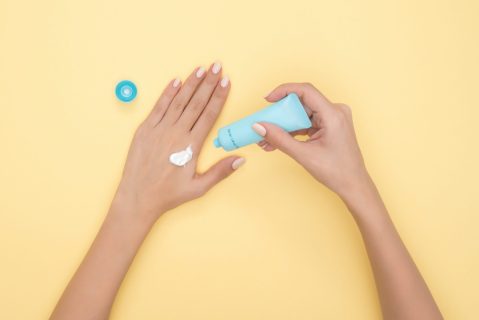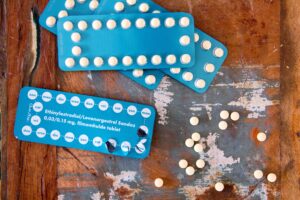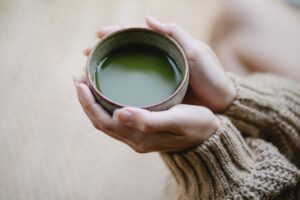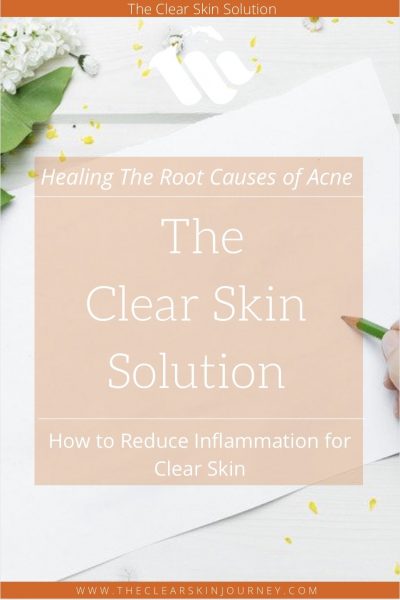Skin cancer, vitamin D and the environment: what’s best for our health and the planet.
The sudden onset of summer weather a few weeks in London ago caught many of us off-guard – I’ve seen a good number of people walking around with very pink shoulders and faces.
This inspired me to write a post about the evidence and risks around using sunscreen for different skin tones, and to take a look at the different types of sunscreens in terms of human health and the environment. You’ll find some useful tips and links throughout the article, as well as my favourite sunscreens that tick all the boxes when it comes to health, anti-ageing and the environment.
Sunscreen, Skin Cancer & Race
Since the 70’s, we’ve been told to use sunscreen to protect ourselves from the harmful rays that are linked to skin cancer. UVA and UVB rays both contribute to premature ageing and skin cancer. UVB rays damage the skins outer layer, leading to burning, whilst UVA rays penetrate deeper and are more associated with skin ageing, so it’s wise to protect ourselves from unnecessary damage.
But is this research relevant for everyone? People of colour are often left out of clinical research, so the results may not reflect what’s best for them (1).
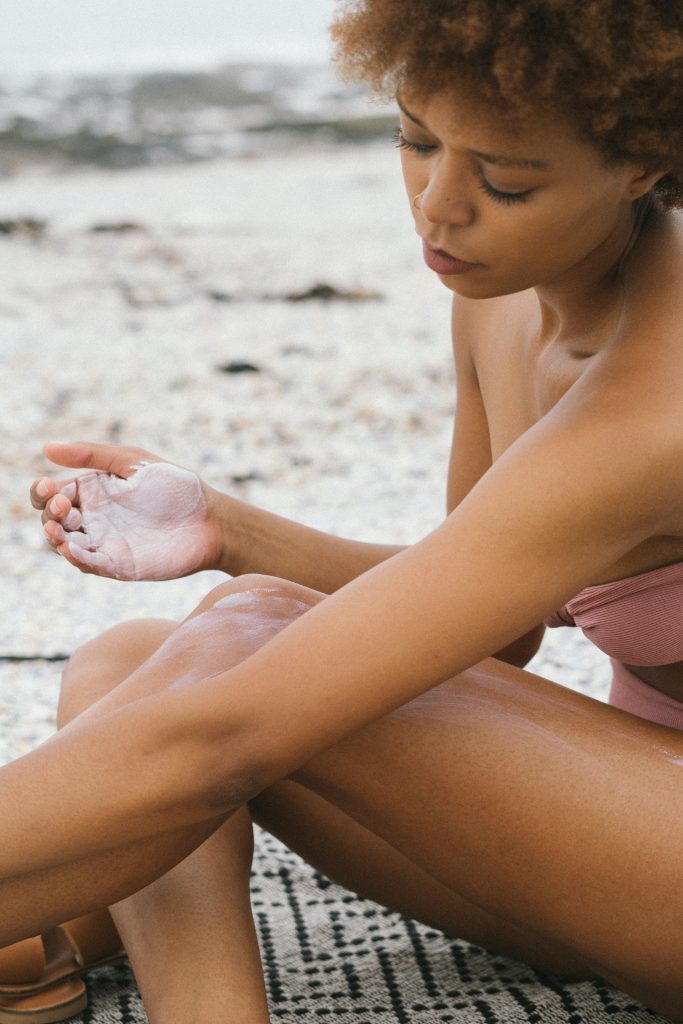
The “one-size-fits-all approach” to sunscreen advice is outdated. Traditional advice from Dermatologists tells us all to wear sunscreen, but research shows that there isn’t the same relationship between ultraviolet light exposure and skin cancer for those with darker skin. Otherwise, we’d have a skin cancer epidemic in sub-Saharan African, whereas is reality, skin cancer rates there are very low.
Higher levels of melanin in brown and black skin are thought to be protective against skin cancer because 50 to 70 percent less UV light is absorbed by darker skin compared to paler skin, meaning that those with darker skin may not benefit from wearing sunscreen in terms of skin cancer prevention. Skin cancer is still a risk for those with darker skin, so be vigilant, but the evidence suggests the cause is likely to be things other than sun exposure. That being said, it’s a personal choice – these are just my opinions based on the research I’ve read – but I do believe it’s important to make this choice with vitamin D levels in mind (more on that below).
Research has shown that when it comes to skin structure and elasticity changes, sun exposure does affect black skin, it just takes longer (2). This research was funded by Boots UK though, which is potentially a conflict of interest. Either way, and as with most things, there is a balance to be struck. Companies such as www.blackgirlsunscreen.com make sunscreen specifically designed for people of colour, so they don’t leave white/grey streaks on your skin.
For those of us with lighter skin, sunscreen not only reduces risk of skin cancer but is also protective against many features associated with ageing, like wrinkles, fine lines and sagging skin. And don’t forget, UV light isn’t only present on sunny days, so it may be advisable to wear sunscreen on exposed skin even in cloudy weather.
While sunscreen helps protect lighter skin against skin cancer, there’s a downside – it blocks a huge 97% of the body’s vitamin D production. This is especially problematic for those with darker skin.
Vitamin D: The Sunshine Vitamin
If UVA and UVB rays are so damaging, should we just stay out of the sun completely? In short, no. Avoiding the sun completely isn’t the answer either. Here’s why.
Many of us have vitamin D levels that are way below optimal, which can increase our cancer risk, affect our long term bone health, and is linked to depression and autoimmunity. We need adequate levels of vitamin D for optimal health, so spending some time in the sun is very beneficial.
Higher levels of melanin in darker skin also mean lower levels of vitamin D absorption, so remember you’ll need to spend more time in the sun to get the same results as lighter skinned people – research suggests anywhere from three to five times longer is needed to get sufficient amounts of vitamin D (3). Vitamin D deficiency is higher in groups with darker skin (including those from an African, African-Caribbean or South Asian background) and those who cover up most of their skin whilst outdoors (4). For these groups, loading up on sunscreen may only worsen the issue of low vitamin D levels.
From October to March every year in the UK, there is no sunlight of appropriate wavelength for synthesis of vitamin D in the skin, and so we must rely on dietary sources and supplements. Everyone should be supplementing vitamin D during the autumn and winter months. Food sources of vitamin D include oily fish such as salmon, sardines and mackerel, liver, red meat and egg yolks, but levels may not be adequately high enough to ensure you get enough vitamin D from food alone.
Sunscreen Types: Chemical vs Mineral
What we put on our skin matters because we absorb it into our bodies. Some sunscreens contain chemicals which mimic our hormones and can interfere with their natural balance. There was some worrying research a few years back that showed we absorb the chemicals from sunscreens into our bloodstream (5). This is not necessarily evidence that the amounts absorbed were harmful, but more research and testing is certainly needed, and may of us want to avoid unnecessary chemicals if at all possible.
In choosing a sunscreen, we looked at both the effects on our health, and the affects on the environment and aquatic life.
There are two main types of sunscreens: mineral and chemical. In terms of human and environmental health, mineral sunscreens are far superior.
Mineral Sunscreens
Mineral sunscreens usually contain either zinc oxide or titanium dioxide, and they work by reflecting the sun’s rays away from the skin like a mirror. They aren’t actually absorbed into the skin, and sit on the skins surface like a protective layer. For this reason, they do tend to leave a chalky white residue on the skin, but formulas are better now than they used to be. They are more expensive than high-street sunscreens because minerals are expensive.
- Non-nano particles are better (though there is no legal requirement to disclose this information at present)
- Uncoated nanoparticles leave less of a residue but are harmful to cells of invertebrates and may cause allergic reactions in humans
Overall, mineral sunscreens are likely better for human health and aquatic life, so opt for one of these if you can.
Chemical Sunscreens
Up to 14,000 tons of sunscreen end up in coral reef areas every year. This is a nightmare for aquatic life, causing damage to corals, deformities to sea creatures and decreasing fertility in fish (6).
Even if you’re not taking a dip in the sea this summer, your sunscreen will wash off in the shower and end up in our waterways anyway.
There is evidence to show that certain chemical sunscreens may affect oestrogen levels in humans, which is particularly problematic in those with oestrogen-dominant diseases like Polycystic Ovary Syndrome (PCOS) and endometriosis. Chemicals contained in them such as benzophenone and oxybenzone can interfere with our natural oestrogen metabolism, possibly making these conditions worse.
Chemical Ingredients to Avoid in Sunscreens
The following list of ingredients are known to cause damage to marine life and many are associated with negative impacts on human health too. Most of them are are ‘endocrine disruptors’ that interfere with the distribution of hormones throughout living organisms, both humans and wildlife included.
SPF chemical filters to avoid:
- Oxybenzone (benzophenone-3)
- Octinoxate (octyl methoxycinnamate)
- Otocrylene
- 4-methyl-benzylidene camphor
- Parabens (Methyl, Ethyl, Butyl and Benzyl) *
- Triclosan *
- Phenoxyethanol *
- Avobenzone: this isn’t on any sunscreen ban lists yet, but it’s another one you might want to avoid as it tends to disintegrate into harmful compounds under UV light.
*These preservatives are also frequently used in shampoos, moisturizers, liquid soaps, and hair conditioners, so you may want to avoid products containing them where possible.
Hawaii has banned sunscreens containing oxybenzone and octinoxate as they cause irreversible damage to marine ecosystems. The Pacific nation of Palau has banned sunscreens containing all 10 ingredients and preservatives known or suspected to be reef-toxic.
Products: Which Sunscreen Should I Use?
MooGoo Natural Sunscreen SPF 30: £15 / 120 g.
My personal favourite for every day use is by Moogoo. It’s very reasonably priced for a mineral sunscreen, blends in quite quickly, and works well under make-up. Based on Zinc oxide, this sunscreen contains none of the nasties listed above. Moogoo is very transparent about what sort of ingredients they use in all their products, which I love.
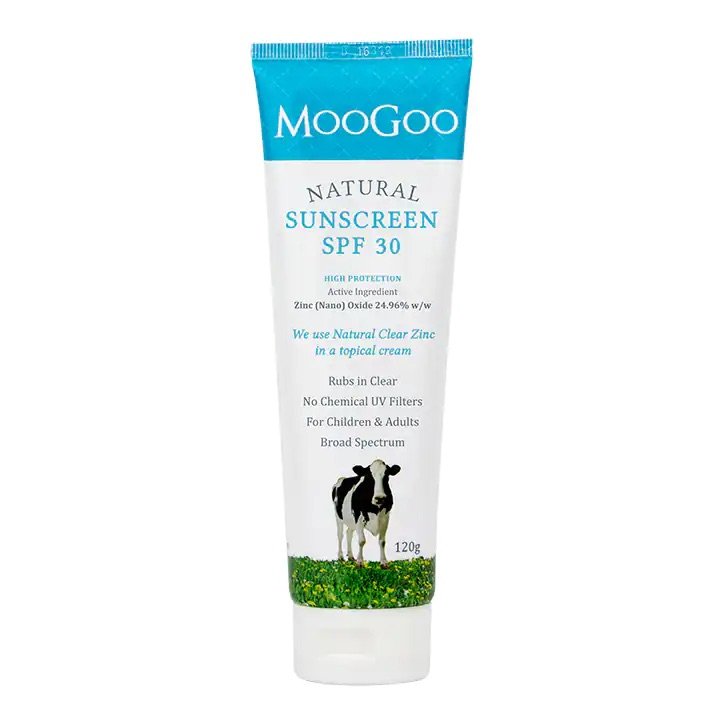
Also check out their SPF moisturiser: MooGoo Cover Up Buttercup SPF 15 Natural Moisturiser: £13.50 / 120 g.
Tropic Great Barrier Sun Lotion SPF 30 & 50: £28 / 200 ml.
Another product I really like is this one by Tropic. It’s a little pricier, but feels as smooth as a non-mineral ‘normal’ sunscreen. It’s actually a mineral and chemical ‘hybrid’ – but don’t worry, the chemical filters have undergone testing and are designated ‘reef safe’, and effective against UVA & UVB rays. It also carries the ‘protect land + sea certification’, and contains no oxybenzone, octinoxate or otocrylene.
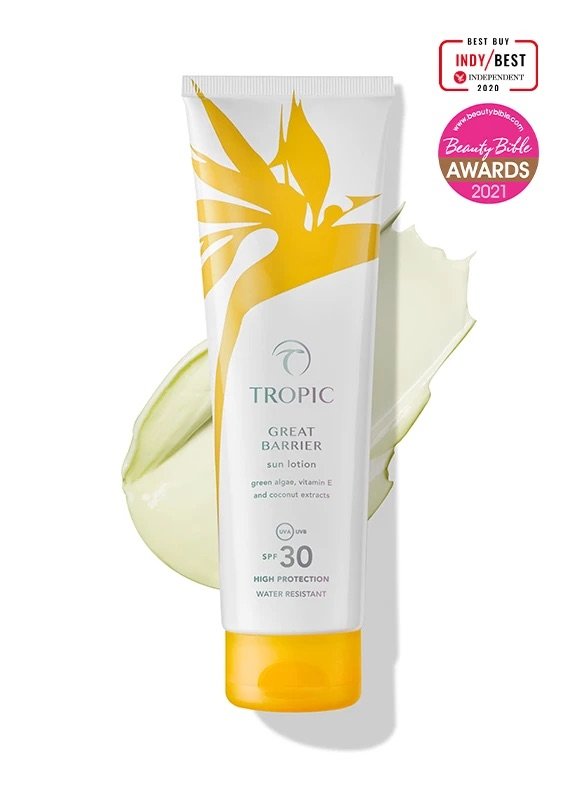
Nature’s Block Mineral SPF 30 Sun Cream: £10 / 150ml.
The cheapest mineral sunscreen I could find was by Holland & Barret. It’s cheaper than the others, though reviews criticise it for leaving white marks on the skin and feeling heavy and greasy. If you’re looking for a cheaper option, this might be a good one to try. Try letting it warm up on your skin for a few minutes before rubbing it in.
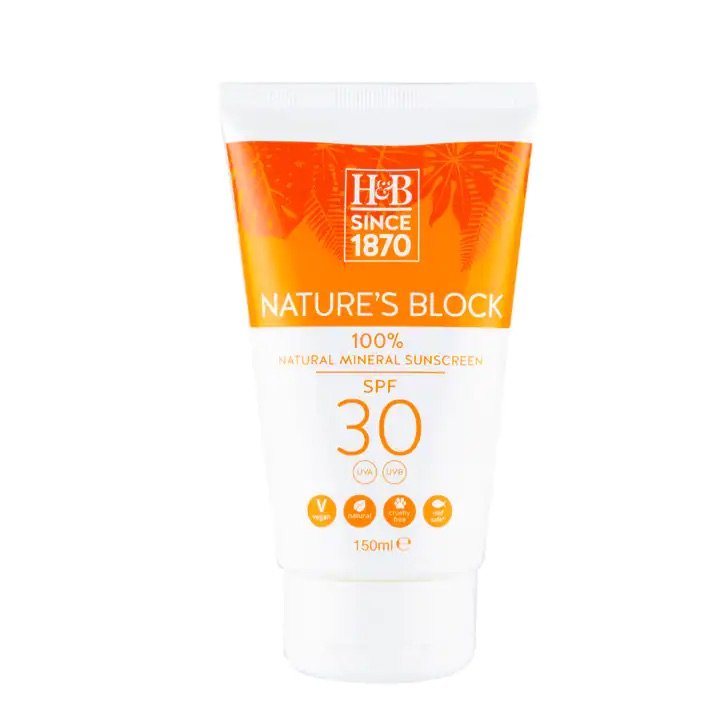
At the other end of the spectrum, there’s the Rolls-Royce of sunscreen. This one has no mineral or chemical filters and instead has beautiful formula based on a naturally occurring compound found in seaweed that was proven by King’s College London to absorb UVA and UVB rays effectively. Their SPF25 comes in at £44 for 150 ml, but reviews say it has staying power so you might not need to reapply unless you go swimming or do sport.
Aethic Triple-Filter Ecocompatible Sunscreen SPF25: £44 / 150ml
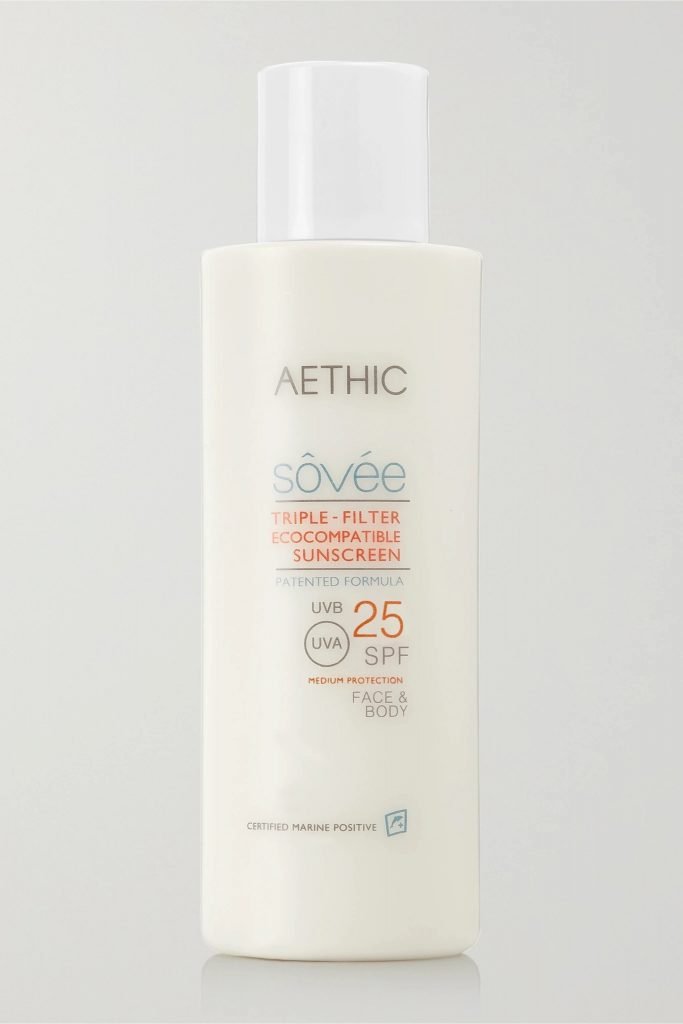
Summary & Conclusion
In conclusion, when choosing a sunscreen, look for mineral-based ‘reef-safe’ options. Mineral sunscreens do tend to be more expensive, but won’t be as damaging to your health or the environment in the long term, so it’s a worthwhile investment.
When it comes to sun exposure, the key, as with most things, lies in finding a balance. Avoid overexposure and underexposure to the sun. Try taking a daily 15-20 minute (or longer for darker skin) walk between 10am and 2pm during the summer without applying sunscreen to give your body a much-needed boost of vitamin D. I recommend using sunscreen on your face the rest of the time if you have a lighter skin tone.
Remember:
– Choose an SPF suitable for your skin tone
– Choose a mineral sunscreen to protect your health and the environment
– Take a short walks (longer for darker skin) without sunscreen to support vitamin D levels
– Remember that sunscreen use blocks vitamin D production and take a supplement in the winter
I strongly advise vitamin D testing at least once a year – home test kits are available here for £29, and please feel free to book in for an appointment if you’d like to discuss your results or supplementation levels.
I hope you found this article helpful, and I’d love to hear your thoughts on it.
In Health,
Kim
References
- https://www.nytimes.com/2019/07/26/us/black-skin-sunscreen.html
- https://www.manchester.ac.uk/discover/news/sun-damages-skin-of-older-black-people-finds-research/
- https://www.ncbi.nlm.nih.gov/pmc/articles/PMC3356951/
- https://www.gov.uk/guidance/vitamin-d-deficiency-migrant-health-guide
- https://abcnews.go.com/Health/study-shows-active-ingredients-sunscreen-absorbed-bloodstream-fda/story?id=62858765
- https://oceanservice.noaa.gov/news/sunscreen-corals.html

